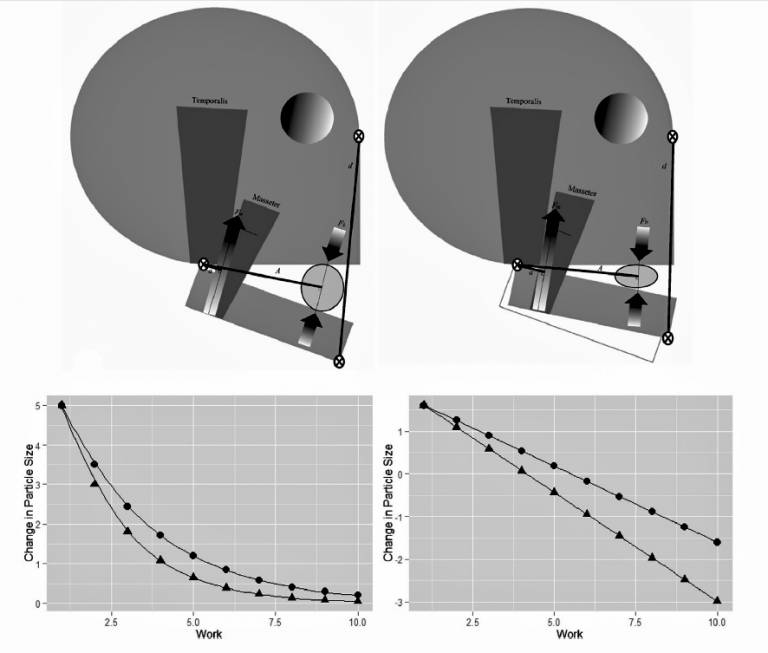Palaeoanthropologists find that occlusal area in Early Homo was associated with chewing efficiency
2 March 2016
The reduction of occlusal dimensions in early Homo is often proposed to be a functional adaptation to diet.
 With their smaller occlusal surfaces, species of early Homo are suggested to have reduced food-processing abilities, particularly for foods with high material properties (e.g., increased toughness).
With their smaller occlusal surfaces, species of early Homo are suggested to have reduced food-processing abilities, particularly for foods with high material properties (e.g., increased toughness).
Here, we employ chewing efficiency as a measure of masticatory performance to test the relationships between masticatory function and food properties. We predicted that humans are more efficient when processing foods of lower toughness and Young's modulus values, and that subjects with larger occlusal surfaces will be less efficient when processing foods with higher toughness and Young's modulus, as the greater area spreads out the overall bite force applied to food particles. Chewing efficiency was measured in 26 adults using high-speed motion capture and surface electromyography. The dentition of each subject was cast and the occlusal surface was quantified using dental topographic analysis. Toughness and displacement-limited index were negatively correlated with chewing efficiency, but Young's modulus was not. Increased occlusal two-dimensional area and surface area were positively correlated with chewing efficiency for all foods. Thus, larger occlusal surface areas were more efficient when processing foods of greater toughness. These results suggest that the reduction in occlusal area in early Homo was associated with a reduction in chewing efficiency, particularly for foods with greater toughness. Further, the larger occlusal surfaces of earlier hominins such as Australopithecus would have likely increased chewing efficiency and increased the probability of fracture when processing tough foods.
Chewing efficiency and occlusal functional morphology in modern humans
Myra F. Laird, Erin R. Vogel, Herman Pontzer
DOI:10.1016/j.jhevol.2015.11.005
 Close
Close

